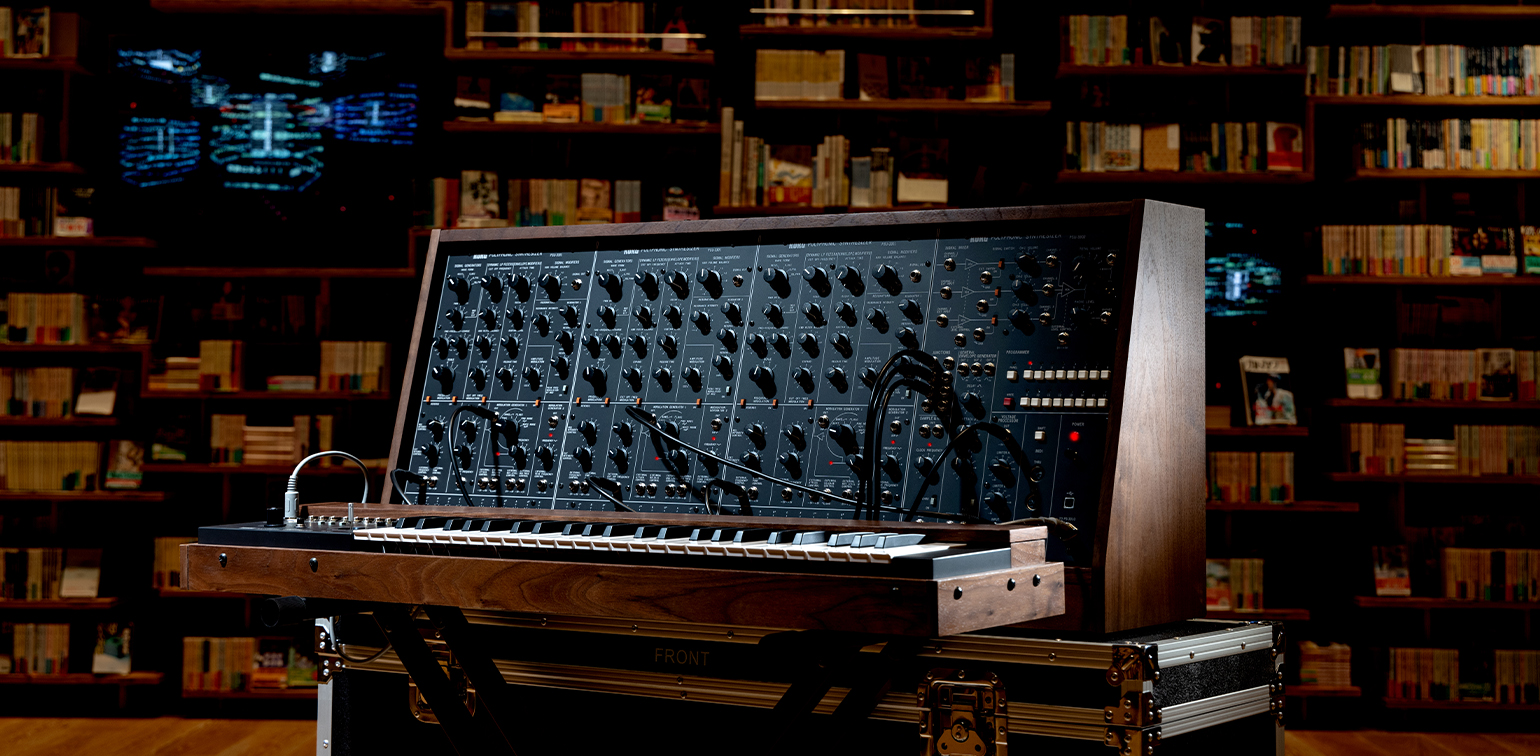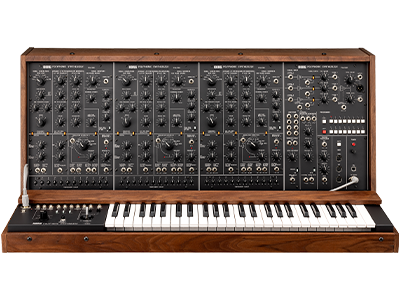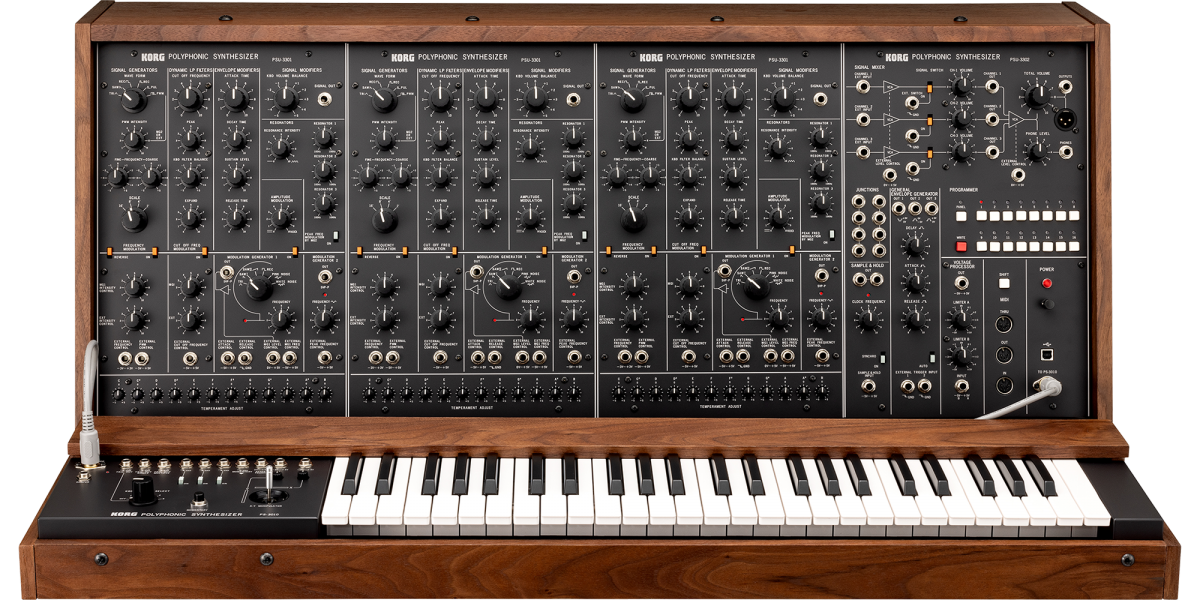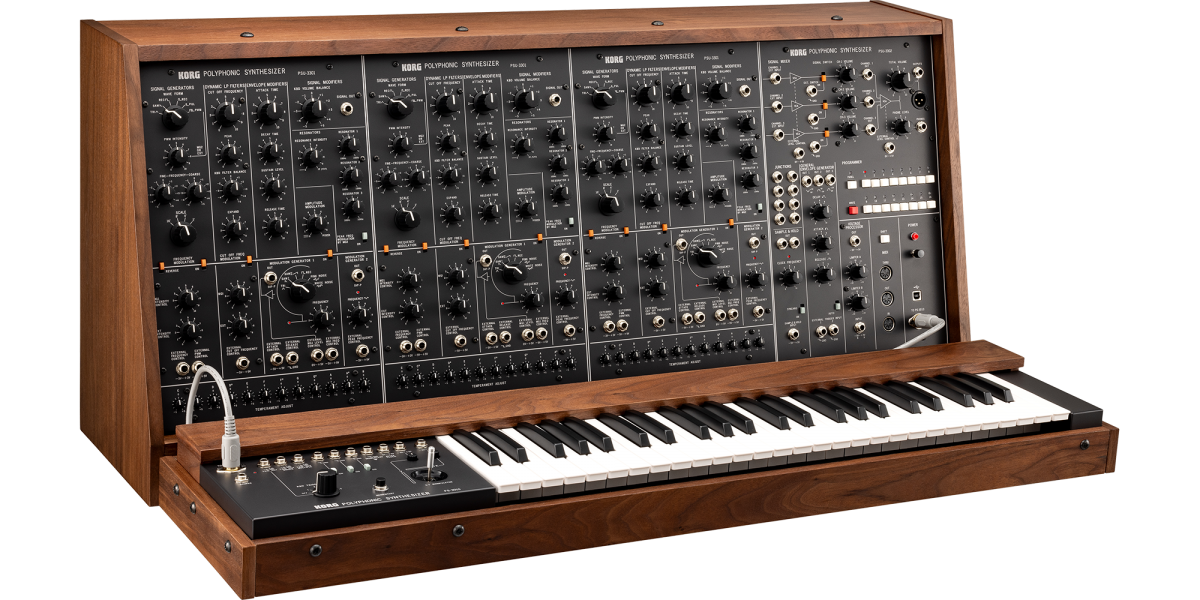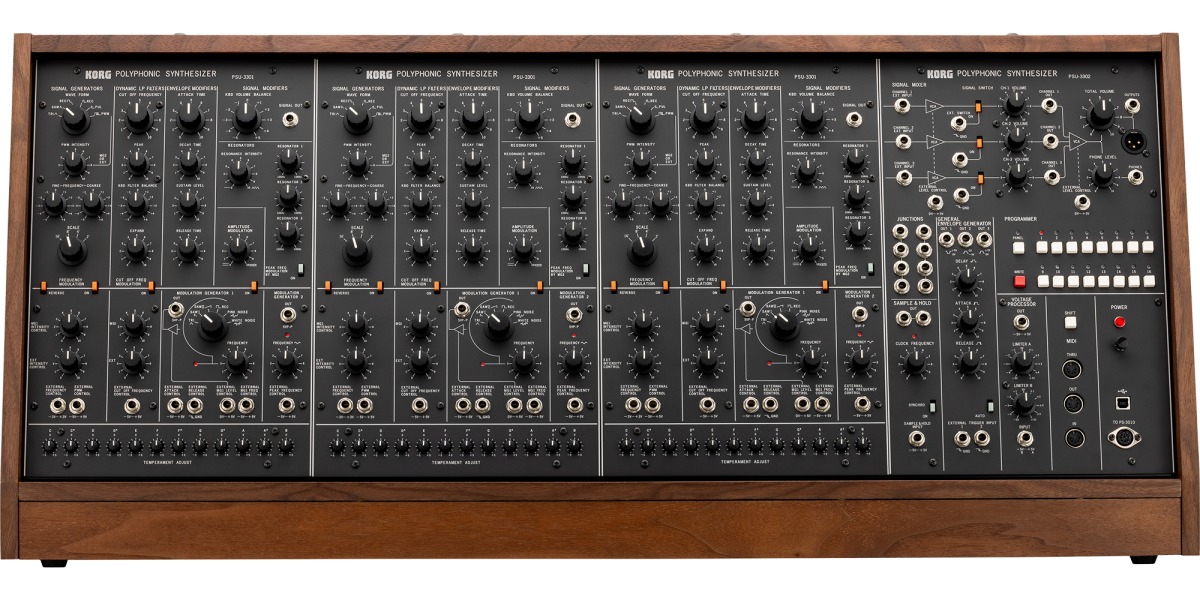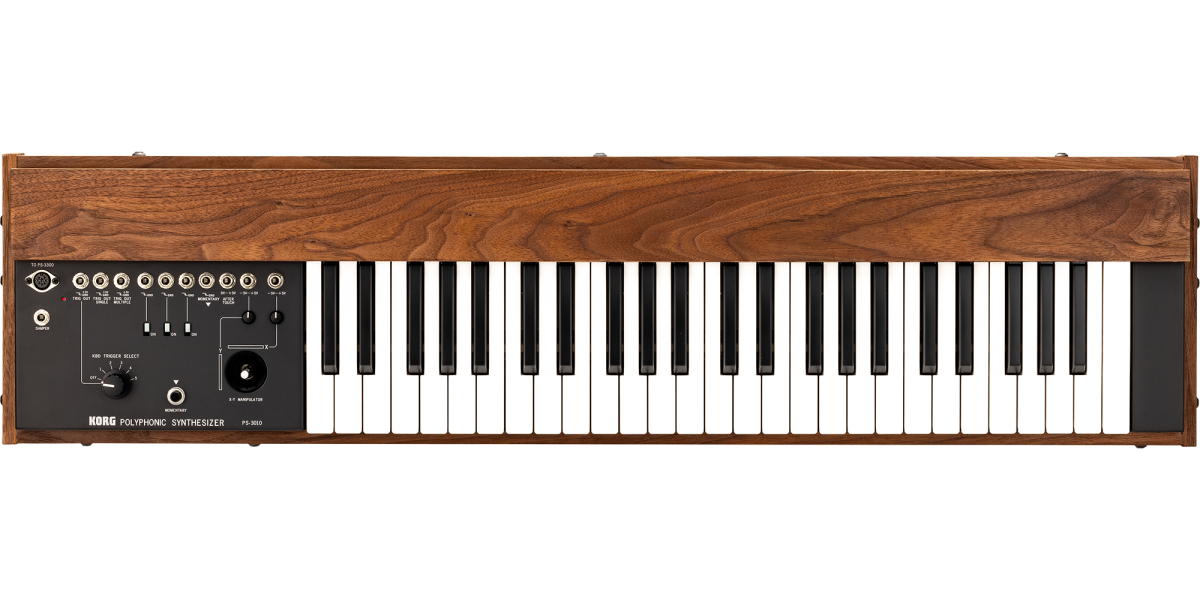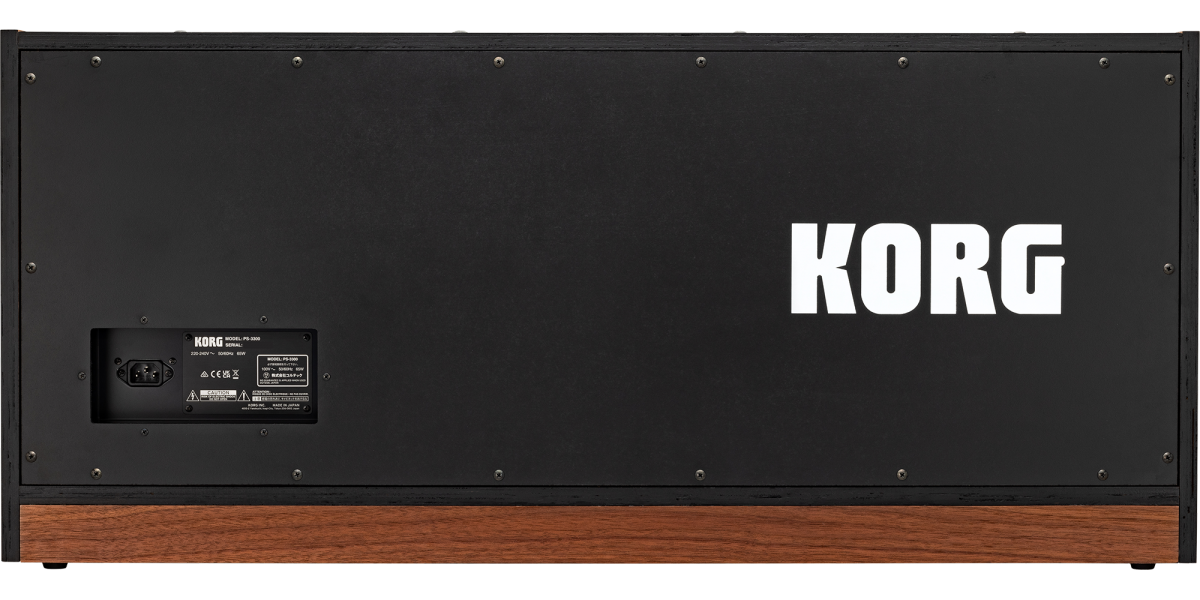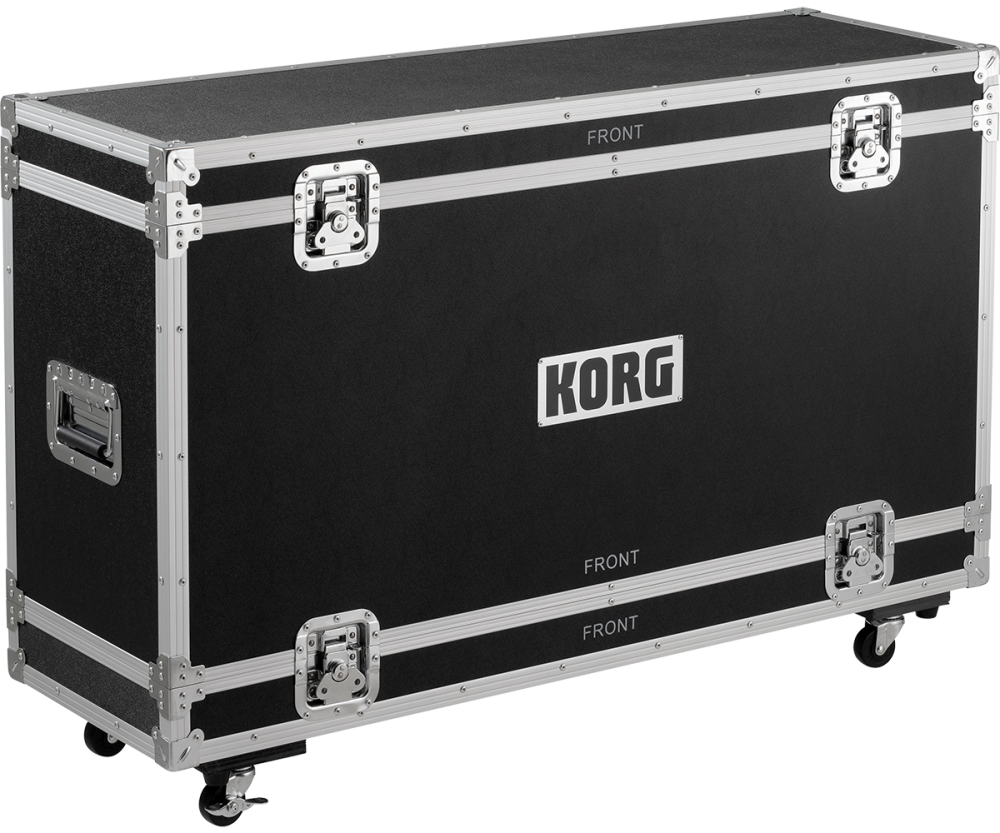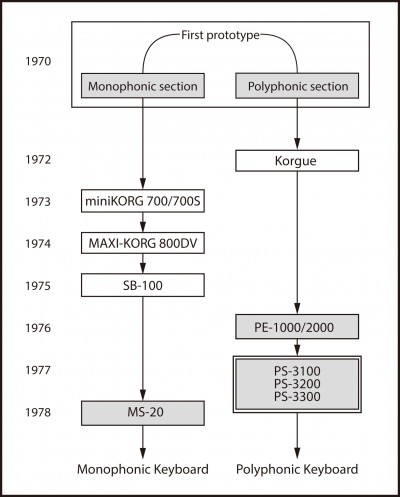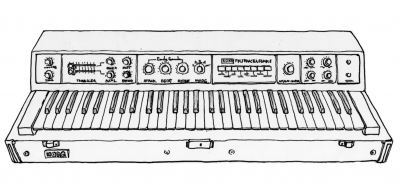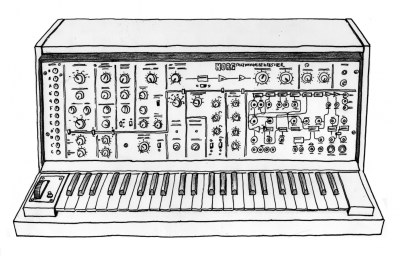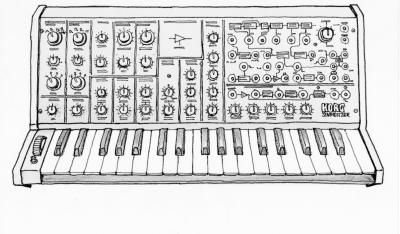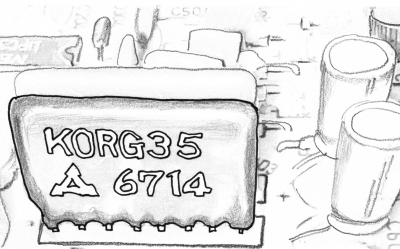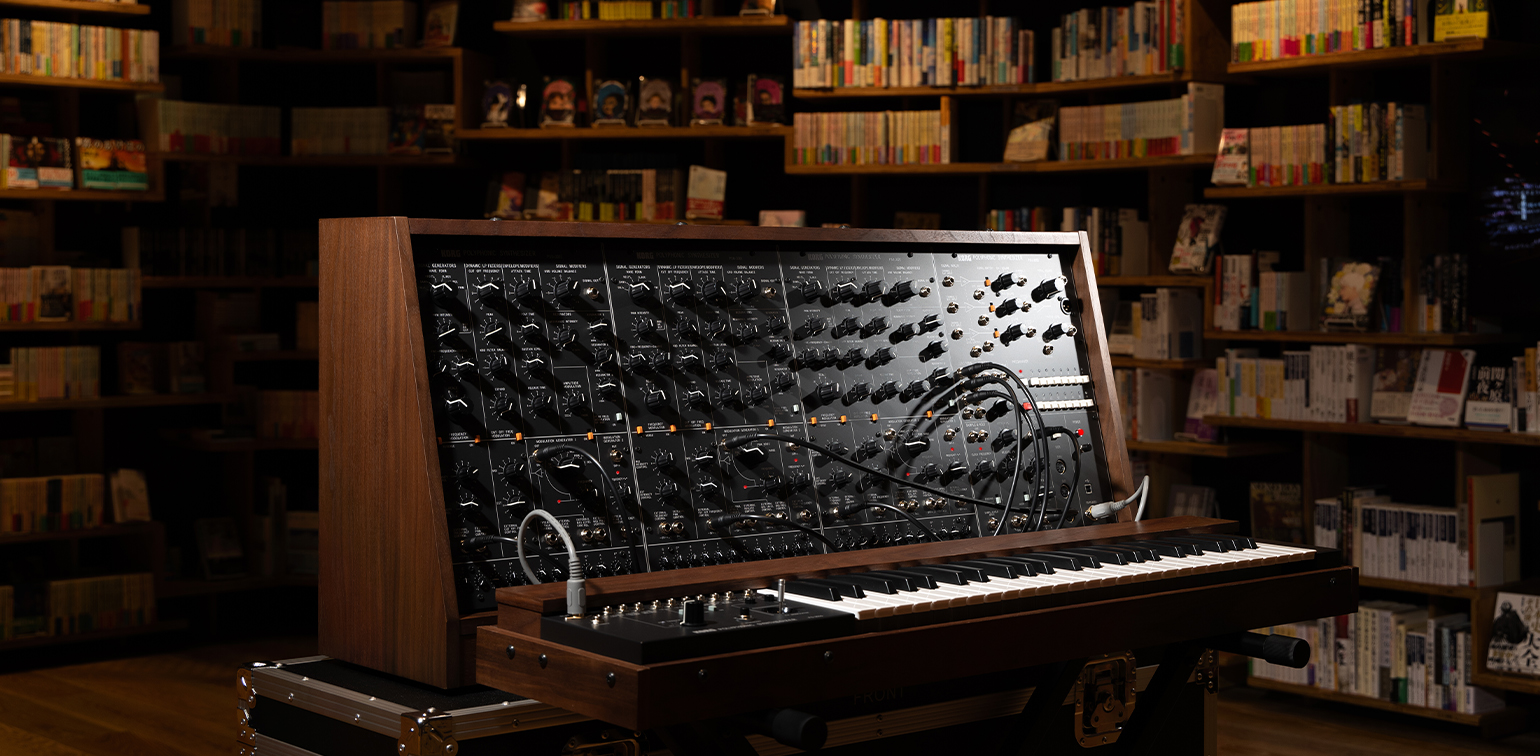
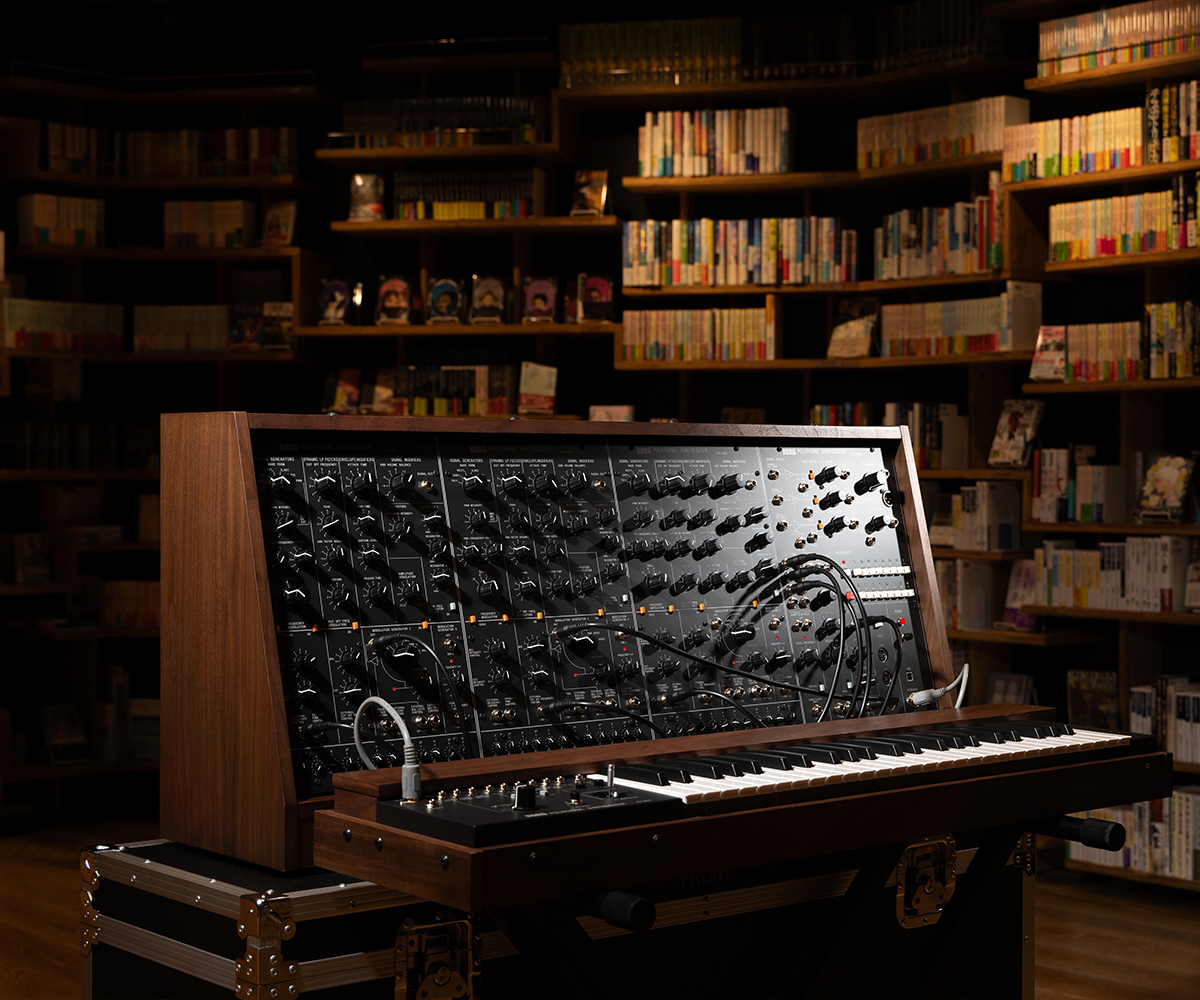
SoundCloud
A legend, reborn.
One of the rarest and most coveted synthesizers in music history, the PS-3300, is back.
Between 1977 and 1981, the original PS-3300 carved out a legendary place in music history. With fewer than 50 units made, its lush, expansive sounds appeared on just a handful of recordings - making it one of the rarest and most sought-after synths in history. Today, original models are almost impossible to find, cementing its status as a true “phantom” of the analog world.
Now, the legend returns. Bought to life by its original creator, Fumio Mieda, and the team behind Korg’s acclaimed revivals (ARP 2600 FS, miniKORG 700FS, and more), the PS-3300 is a faithful reproduction that blends meticulous craftsmanship and attention to detail with modern reliability.
For synth enthusiasts and forward-thinking musicians alike, the PS-3300 isn’t simply an incredibly powerful analog instrument - it’s a piece of music history, reborn.
Reawakening a legend
The PS series revolutionized synthesis in the late ’70s with fully polyphonic analog designs, each with its own keyboard. Following the PS-3100’s debut in 1977 and the programmable PS-3200 in 1978. The PS-3300 emerged as the crown jewel - a monumental synth combining three PS-3100 units into a single, towering cabinet in 1977. Its vast sonic palette captivated pioneering artists such as Keith Emerson, Kraftwerk, Jean-Michel Jarre, and Aphex Twin.
With only around 50 units ever produced, the PS-3300 became one of the most coveted and elusive synths in history, renowned for its huge, lush and unmistakable sound.
Half a century later, the legend returns.
Reviving the PS-3300 has been a monumental undertaking. Korg’s expert engineering team - renowned for acclaimed revivals such as the ARP 2600 FS and miniKORG 700FS - worked closely with the instrument’s original creator, Fumio Mieda, whose insights and guidance ensured that every aspect of the recreation stayed true to the spirit of the original. Rebuilding such a complex synthesizer came with significant challenges. Many of the original components are no longer available, requiring the team’s technical expertise to select modern alternatives while preserving the PS-3300’s signature sound. Mechanical elements, from the iconic knobs to the finely crafted wooden panels, were meticulously replicated. Where sourcing wasn’t possible, parts were faithfully recreated from scratch.
Through countless hours of collaboration, rigorous testing, and careful refinement - always with Mieda’s input - the team ensured that no detail was overlooked. The result is more than just a simple revival of a classic instrument, it’s a masterpiece that captures the spirit of the original while inspiring a new generation of creators.

Enhanced Features: The PS-3300 in Its Ultimate Form
Faithful to the original yet refined for today, the new PS-3300 builds on Fumio Mieda’s visionary design with modern enhancements that elevate its functionality and usability.
A standout addition is programmable memory—previously available on the PS-3200 but absent from the original PS-3300. With 16 banks of 16 slots each (256 program slots total), saving and recalling custom sounds is now effortless, making both studio work and live performance more intuitive.
Connectivity has been upgraded to meet modern production needs. The PS-3300 features a USB-B port and MIDI IN/OUT/THRU connectors for seamless integration with computers and external gear. Korg’s free librarian software further streamlines your workflow, allowing you to back up, organise, and manage your sound library with ease.
Enhancements extend to the hardware as well. The PS-3010 module, once an optional add-on, now comes included. The keyboard has been expanded from 48 keys (F to E) to 49 keys (C to C) for improved playability. Plus, the original 60-pin cable has been replaced with a more user-friendly 8-pin connection, simplifying setup without compromising functionality.
With enhanced connectivity, the PS-3300’s dedicated librarian software empowers users to effortlessly manage programs and independently apply tunings. This unlocks near-limitless possibilities for unique performances and innovative sound design.
More information about the Librarian
here
These modern enhancements make the PS-3300 not just a faithful revival, but a true evolution of a classic, designed to inspire your creativity with every note.
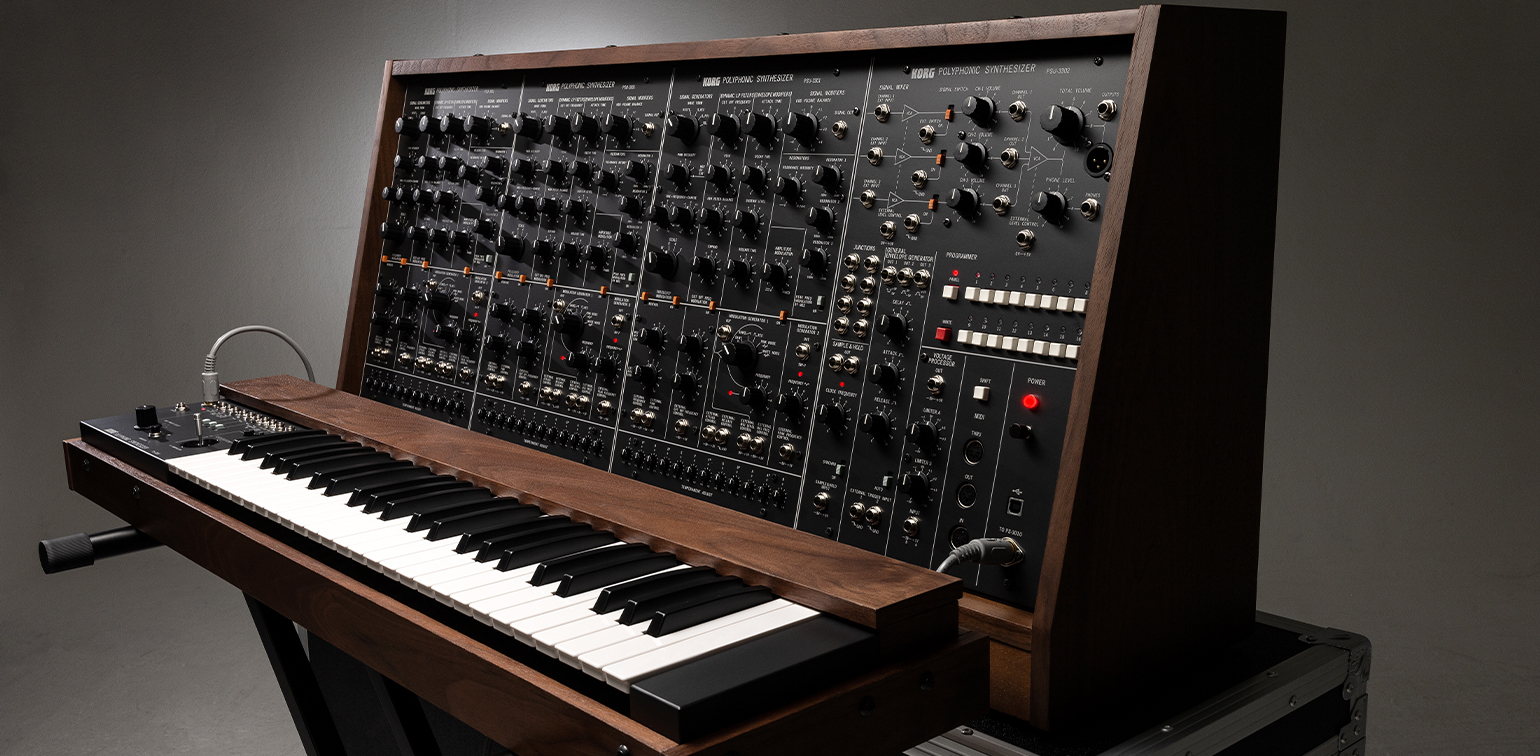
Our quest for the origins of analog synthesizers
The new PS-3300 delivers an astonishingly rich sound - equivalent to 147 MS-20 units - while remaining true to the architecture that defined the original. At its core are three PSU-3301 sound generator units, just like the PS-3100. Each unit includes a VCO, VCF, VCA, and EG, plus powerful modulation tools: two LFOs (modulation generators), three voltage-controllable bandpass filters (resonators), and 12 independent tuning knobs for microtuning—an expressive capability only possible with fully polyphonic synthesizers possible only on fully polyphonic synthesizers.
The three PSU-3301 modules operate as independent layers, with overall balance controlled by the PSU-3302 module on the right. This versatile section includes a sample & hold for stepped control signals, a global EG (GEG) for shaping overall dynamics, a voltage processor for fine-tuning control signal width and phase, and junction jacks for distributing signals. Despite its deep modular flexibility, the PS-3300 is semi-modular, with internal connections that eliminate the need for patch cables to produce sound.
The interface preserves the exploratory spirit of the original, complete with unconventional controls and parameters whose naming reflects the era of its design. Abundant patch points offer creative routing possibilities for control signals, inviting users into the same trial-and-error process that inspired early electronic musicians.
One standout feature is the ability to shape sound using the three-band resonator - applying LFO modulation to achieve phaser, wah, and other dynamic effects. Long before dedicated effects units became standard, this innovative design allowed for vibrant, evolving textures. With these tools, the PS-3300 invites users to rediscover the joy of sonic experimentation and experience the forward-thinking philosophy that helped define a new era of synthesis.
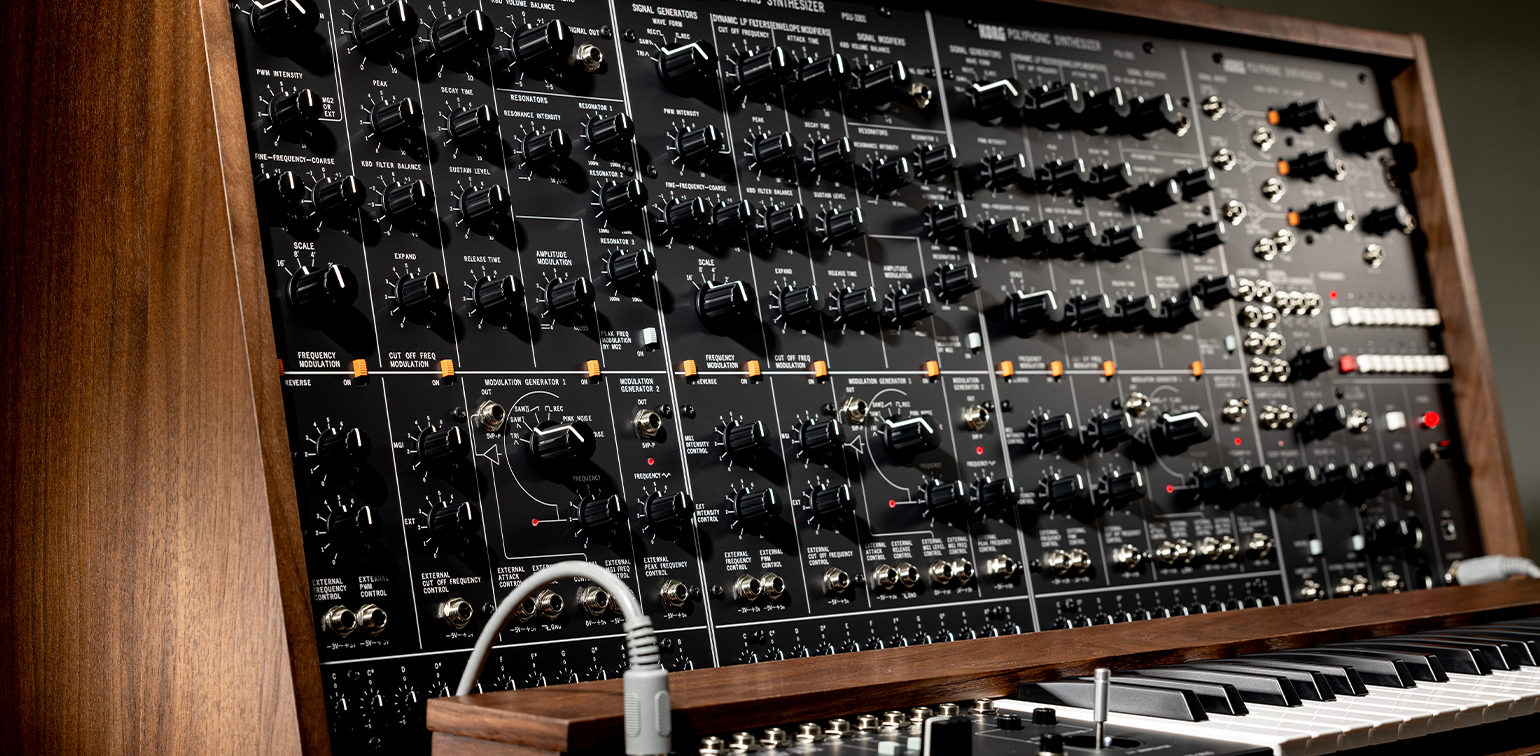
The ritual of tuning
Fumio Mieda envisioned polyphony as more than just playing chords - it was about enabling musicians to explore any scale, including just intonation, and to experiment with clusters of notes for unique sonic textures. This philosophy led to the inclusion of temperament adjustment knobs in the PS series, allowing players to independently tune each of the 12 notes from C to B.
Rooted in the same principles as modern microtuning, this feature empowers musicians to craft custom tunings and explore scales beyond conventional standards, expanding creative possibilities.
Like other analog synthesizers, the original PS-3300 required time for its tuning to stabilize after power-up, with factors like temperature and humidity affecting pitch. Honouring this aspect of the instrument’s character, the new PS-3300 includes a dedicated tuning mode*. With this feature, users can connect an external tuner and fine-tune the instrument before playing - embracing the deliberate, hands-on process that Mieda considered an essential part of the PS-3300 experience.
* For details, refer to the Owner’s Manual.
This "ritual of tuning" not only preserves the authenticity of the original but also invites players to engage more deeply with their sound.

Crafted in Limited Quantities for the True Enthusiast
The new PS-3300 is a marvel of complexity, featuring nearly ten times the number of components found in the KRONOS. While its electronics benefit from modern parts, the instrument stays remarkably faithful to the original. Every detail - from the case, panel, and knobs, to the wooden side panels - has been meticulously recreated, with manufacturing methods closely mirroring those used in the original production. Each unit is handcrafted to ensure exceptional quality and authenticity.
Due to the intricate hand-crafted nature of PS-3300, production capacity is naturally limited. The PS-3300 is therefore offered as a limited-edition instrument, ensuring it remains as rare and coveted as its predecessor.
Conceived as a groundbreaking tool for creating uncharted sounds, the PS-3300’s true potential is unlocked by the artist. Its purpose is fulfilled when you bring it to life - pushing creative boundaries and shaping the future of sound.
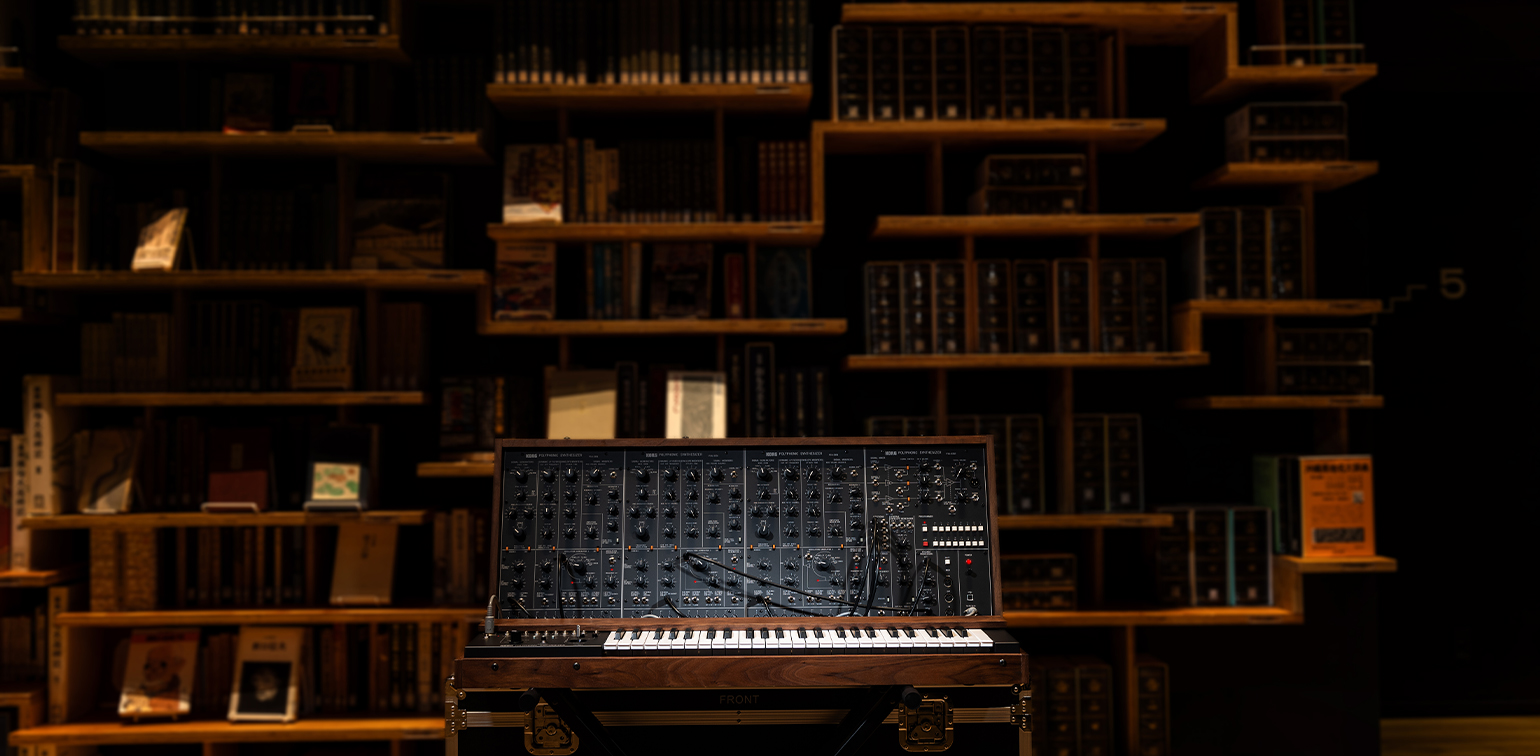
Made-to-fit hard case included
This instrument (both the main unit and the keyboard unit) comes complete with a custom-designed hard case with casters, ensuring safe storage and transport.
Memories of the PS-3300
Fumio Mieda (developer of the original PS-3300)
The history of KORG synthesizers began with the unveiling of the first prototype at the Japan Audio Fair in 1970. KORG’s goal for this first prototype was to create a new kind of electronic organ, an instrument with two keyboards and no foot pedals. The instrument had two voltage-controlled monophonic oscillators and a single fixed polyphonic oscillator. It was able to produce vowels (a-e-i-o-u), use non-linear synthesis to alter the harmonics, and featured a “Traveler” controller for players to move the low-pass and high-pass filter cutoff frequencies, among other features to add to its integrated monophonic and polyphonic sound generators.
Although I thought we had created a new kind of electronic organ, it was pianist Masahiko Satoh who said that “this is a synthesizer”, and used the initial prototype at public performances and in recordings for the first time. This first prototype was the origin of the specifications and technical elements for the monophonic and polyphonic instruments we marketed, following this and leading up to the MS-20. Figure 2 shows the major monophonic and polyphonic instruments we developed at that time, in chronological order.
We gave priority to marketing the Korgue (also known as the “Deka-Korg”) first, which used a polyphonic sound generator, as we believed that a mono- phonic instrument that couldn’t play chords even though it had a keyboard would not be well received. Unfortunately, even though the Korgue had many new features like the Traveler controller, it did not sell well at all because of our lack of a distribution network and the fact that the instrument was expensive. Our next move was to offer the miniKORG 700 and 700S monophonic synthesizers. Although we received some complaints in Japan about the inability to play chords on these instruments, with customers concerned that the product might be faulty, these synthesizers were big hits worldwide owing to their stable pitch and incredible sound quality.
The following year, we released the 800DV, a two-voice synthesizer that featured two miniKORG 700 sound generators and could play two different pitches and sounds at the same time when you played two different notes on the keyboard. Although DV stood for “dual voice”, I felt that two voices really weren’t enough, and so we put our efforts into developing a polyphonic instrument right after the 800DV was released.
One of the differences between the sounds of a synthesizer and an organ is that synthesizers feature a VCF (voltage-controlled filter) to change the harmonics of the sound over time. Actually, the year before we released the PS-3000 series, we made the PE-1000 Polyphonic Ensemble. This instrument featured 60 oscillators (one per key) that could be tuned separately and 60 basic EGs (envelope generators) and a VCF. Although we didn’t call the PE-1000 a synthesizer, this was indeed a polyphonic synthesizer.
The PS-3300, which is the instrument we’re bringing back now, was released between the time of the PE-1000 Polyphonic Ensemble and the MS-20 monophonic synthesizer. Although these three instruments are widely different in terms of format, they share many common traits in terms of product specs, functions and technical elements. Actually, there were three models in the PS-3000 polyphonic synthesizer series. The PS-3100 featured one series of 48 synthesizer circuits, whereas the PS-3300 had three series of 48 circuits for a total of 144, and the PS-3200 had the ability to store sounds in memory. These instruments improved upon the technology of the PE-1000 that was released the previous year, with more advanced synthesizer functionality. We had also designed prototypes of these models with features like manual note input and a polyphonic sequencer for playback, but decided not to release them due to pricing concerns. This model used a large 60-pin connector for input/output, as it was released several years before the MIDI specifications were published.
I frequently hear that the development of the PS series must have been difficult, considering the large amount of hardware these instruments contain. While these instruments required a massive number of parts due to the need to have a synth circuit for each key on the keyboard, we were successful in reducing the number of parts required for each key, which was the greatest hurdle. Once we did that, it didn’t take quite as much time as expected to finish the instrument. We did use some multipurpose IC chips, but the main circuitry was all done using transistors. The KORG35 (see footnote) served this purpose, integrating the multiple transistors of the VCF into a single hybrid IC. The EG, which used voltage to control the parameters, also had a minimum of components. We only used a single transistor for the VCA (voltage-controlled amplifier).
In writing these recollections, I went back to the handwritten circuit diagrams and mechanical drawings for the PS-3300. These documents reminded me in detail as to why we developed this instrument at that time and what it was like to develop. For example, our idea of “polyphonic” at the time was quite different from how we think of it nowadays. It would be uninspiring if you just treated a polyphonic synthesizer as a monophonic synthesizer played with chords. We had all kinds of ideas about this, considering that we had an instrument that could make more than one note sound at the same time. For instance, what if the synthesizer could generate pitches in all kinds of tunings, not only equal temperament? Or, what if the instrument could create sounds by producing notes not just as chords, but as clusters of tones? This instrument even attracted the attention of people who research different tunings, and was modified so that players could alter the tuning as the song progresses as a result.
Although not many units of the PS-3000 series were shipped due to its high price, the technical elements developed for these models became the impetus for creating many other products, including the MS-20 synthesizer, the M-500 SP (micro-preset) preset synthesizer with speakers, the X-911 guitar synthesizer and so on. I should add that although the PS-3000 made its debut as a “fully polyphonic synthesizer” for which all the keys you play would produce sound together, we hadn’t actually tested that internally, as one would need one finger for each key, or 48 fingers to do so. That said, I came across a band several years ago that did so. A number of band members gathered round the keyboard onstage and together they played all the keys at the same time, finally proving that our product was fully polyphonic! I was in the audience, and seeing that made me breathe a sigh of relief for the first time in decades.

Note: I forgot how we came up with the name for the KORG35 component, although I do recall that there was a hugely popular manga series at the time called “Golgo 13” that may have provided some inspiration. This IC that was developed for the PS-3000 series later went on to become the subject of scrutiny for many enthusiasts and analytical circuit researchers as the filter for the MS-20 that could produce unique tones (Figure 6).
Auditor, KORG INC.
Supervising Director for development of the PS-3300
Artists Who Shaped the Sound of the PS-3300

The PS-3300 is a highly coveted, ultra-rare instrument—one that only a select few artists have had the privilege to wield. Those who have, however, have created iconic masterpieces with its unparalleled sound.
We are thrilled to offer an exclusive sound pack curated by the legendary producer ATOM™, showcasing his signature patches on the PS-3300. This collection captures his unique sonic vision, bringing the essence of this rare synthesizer into your own productions. Each patch has been meticulously crafted to highlight the PS-3300’s rich harmonic depth, expansive modulation capabilities, and unmistakable warmth.
“What sets this synthesizer apart is its rich, warm sound and timeless character. While steeped in classic architecture, it invites profound exploration and opens the door to experimental sound design, often exceeding the purpose for which it was originally conceived. Its remarkable flexibility is showcased through features like per-voice detunability, extensive patching options, and the audio-range LFOs I’ve come to adore. This instrument is a masterpiece—a testament to meticulous engineering and a true labor of love.”
